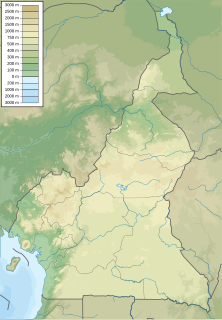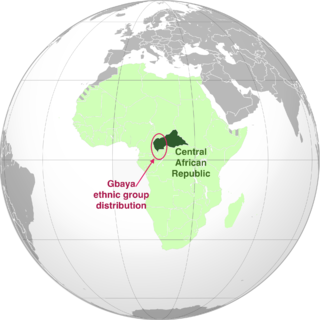
Bawaka is a village in the commune of Ngaoui in the Adamawa Region of Cameroon, near the border with the Central African Republic.

Djalecti is a village in Almé locality in the commune of Mayo-Baléo, in the Adamawa Region of Cameroon, near the border with Nigeria and Park of Polie in the North Region. The village, as indicated in the map is too small with 222 inhabitants in 2017. Like all other African villages, all the villagers are mostly from one clan. The main activity is traditional agriculture.

Bembarang is a village in the commune of Meiganga in the Adamawa Region of Cameroon, near the border with Central African Republic.

Boybaya is a village in the commune of Dir in the Adamawa Region of Cameroon.

Dankali is a village in the commune of Meiganga in the Adamawa Region of Cameroon, near the border with the Central African Republic.

Daré is a village in the commune of Djohong in the Adamawa Region of Cameroon, near the border with the Central African Republic

Dozui is a village in the commune of Meiganga in the Adamawa Region of Cameroon, near the border with the Central African Republic.

Gangkombol is a village in the commune of Meiganga in the Adamawa Region of Cameroon, near the border with the Central African Republic.

Kalaldi is a village in the commune of Dir in the Adamawa Region of Cameroon.

Kélasami is a village in the commune of Dir in the Adamawa Region of Cameroon.

Koundé is a village in the commune of Dir in the Adamawa Region of Cameroon.

Lamou is a village in the commune of Dir in the Adamawa Region of Cameroon.

Malingara is a village in the commune de Dir in the Adamawa Region of Cameroon.

Malombo is a village in the commune of Nyambaka in the Adamawa Region of Cameroon.

Mbamti-Laïnde is a village in the commune of Banyo in the Adamawa Region of Cameroon.

Mbella-Ngou is a village in the commune of Djohong in the Adamawa Region of Cameroon, near the border with the Central African Republic

Nandéké is a village in the commune of Meiganga in the Adamawa Region of Cameroon, near the border with the Central African Republic.

Ndawé is a village in the commune of Djohong in the Adamawa Region of Cameroon, near the border with the Central African Republic

Ngaouyanga is a village in the commune of Mbe in the Adamawa Region of Cameroon. et le département de la Vina au Cameroun, on the road from Ngaoundéré to Mbe and Garoua.

Tello is a village in the commune of Belel in the Adamawa Region of Cameroon.






